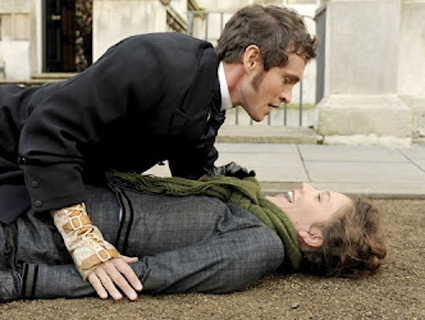
French pelvic douche of about 1860 from Fleury, reproduced from Siegfried Giedion, Mechanization Takes Command (New York: Oxford University Press, 1948)
The new film Hysteria tells a fictionalized account of the invention of the vibrator in Victorian-era England. But just how historically accurate is it? Surprisingly close. As historian Rachel P. Maines points out in her book “The Technology of Orgasm,” the symptoms of “hysteria”—a catch-all diagnosis for a slew of vexing lady problems that dates back a couple millennia—included fainting, anxiety, sleeplessness, irritability, nervousness and “a tendency to cause trouble for others.” (Two other symptoms suspiciously associated with hysteria? Erotic fantasy and excessive vaginal lubrication.) And since at least the second century, a good orgasm, or rather “hysterial paroxysm,” was considered a suitable treatment—at least when practiced by a medical professional. Check out our illustrated history of hysteria—and the early sex toys used to treat it—from the time of Hippocrates to today.
For more information on the fascinating history of the vibrator, check out Rachel Maines’ book “The Technology of Orgasm: ‘Hysteria,’ the Vibrator, and Women’s Sexual Satisfaction” and the Good Vibrations Antique Vibrator Museum.
Open-source timeline tool by Balance Media and WNYC/John Keefe. Try it yourself here!















